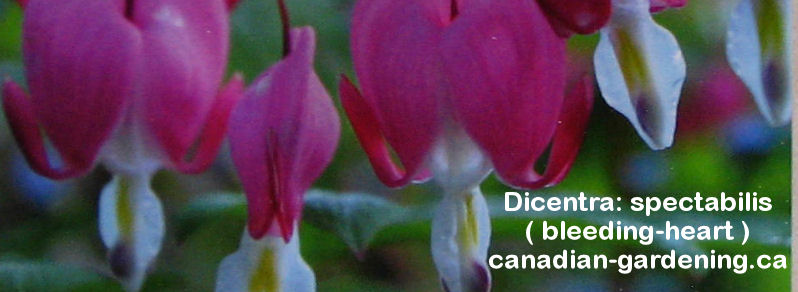
Dicentra Spectabilis - Bleeding Heart common name:
I just bought two new plants of Dicentra. So, I'll share the "how to grow" information here.
Tips and Tricks for Success:
- Plant your new plant in spring after the last frost.
- If you cannot plant perennials right away, store them in a cool, dry, dark location.
- I just plant my perennials in a pot and wait until I can plant them outside.
Planting:
- Plant in the shade - morning sun is fine, but afternoon will be too hot.
- Add compost or peat humus to enrich and loosen soil, if needed.
- Plant so that the crown and roots are completely covered and the tips of dormant eyes are just below the surface.
- Water thoroughly after planting.
Growing:
- Grow under shrubs or evergreen trees and protect from strong winds.
- Once planted the addition of organic mulch will help retain moisture in the soil as well as keep down the weeds.
- Bleeding hearts are quite drought-tolerant once established, but will go dormant in summer if not provided enough moisture.
- These plants are ideal when painted amid patches of spring-flowering bulbs, as their foliage will obscure the bulb foliage as it dies back.
- Plants are sensitive to chemicals and heavy fertilizers.
Winterize:
- Foliage should be cut back in the fall.
- For new plants, provide a winter mulch of evergreen boughs or salt marsh hay after the ground freezes to help prevent heaving.
